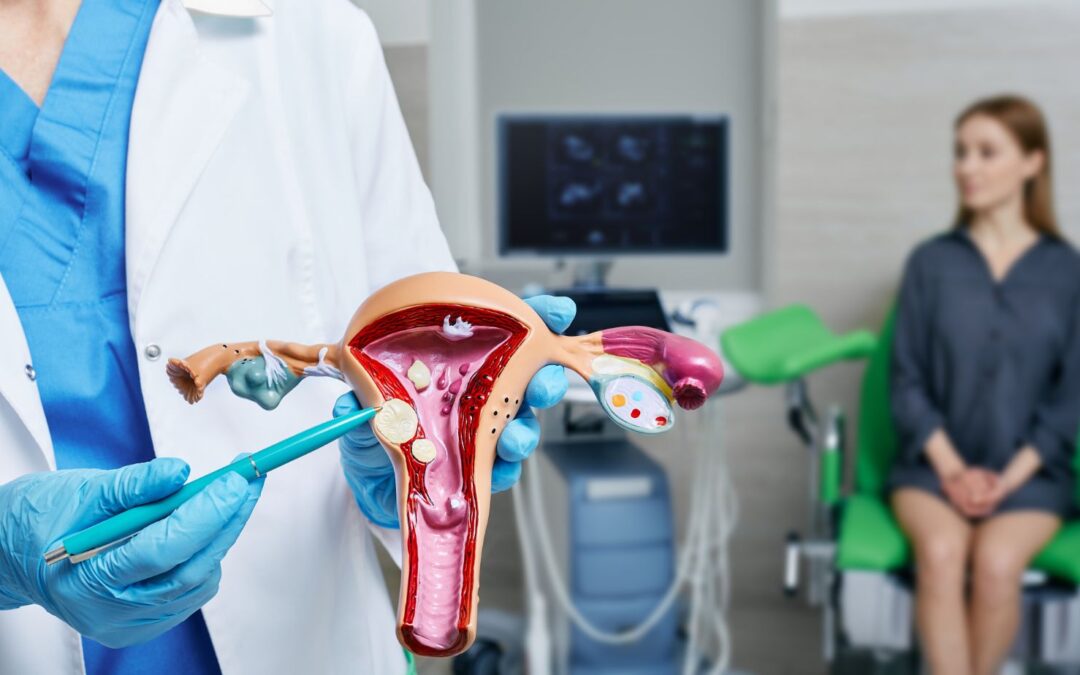Understanding the position of the uterus is important for women planning to conceive. The uterus, a vital reproductive organ, can take on different positions, which might influence pregnancy. At least half of all women have an anteverted uterus, which is a normal position and typically does not affect fertility or pregnancy outcomes.
Types of Uterine Positions
There are several types of uterine positions, each characterized by unique qualities which you should know as these may determine how conception and pregnancies occur.
Anteverted Uterus
The anteverted uterus tilts forward towards the bladder and is the most common position, seen in about 50% of women. Generally does not affect fertility or pregnancy. It can be associated with symptoms like increased menstrual cramps.
Retroverted Uterus
This positioning occurs when the uterus tilts backward toward the spine; this condition affects between 20-25% of women. This can cause back pain and discomfort during intercourse; while this typically does not affect fertility, concerns should be discussed with a healthcare provider.
Midposition Uterus
The uterus stands straight up, without tilting forward or backward. This position is less common than anteverted or retroverted positions but is generally considered neutral and doesn’t usually come with specific symptoms or fertility issues.
Factors Affecting Uterus Position
The position of the uterus can be influenced by several factors, each playing a role in its orientation and potential impact on reproductive health:
Genetics
Genetics play a significant role in determining the position of the uterus. Family history can predispose women to specific uterine orientations, such as anteverted or retroverted positions.
Previous Surgeries
Pelvic surgeries, such as hysterectomy, myomectomy, or surgeries for endometriosis, can alter the position of the uterus. Surgical procedures may result in adhesions or changes in pelvic anatomy that affect the uterus’s alignment.
Endometriosis
Endometriosis is a condition where tissue similar to the lining of the uterus grows outside the uterus. This can lead to adhesions that cause the uterus to adhere to other pelvic structures, potentially altering its position.
Pelvic Inflammatory Disease (PID)
PID is an infection of the female reproductive organs, often caused by sexually transmitted bacteria.

PID can lead to inflammation, scarring, and adhesions within the pelvic cavity, which may shift the position of the uterus.
Diagnosing Uterus Position
Healthcare providers employ various methods to accurately diagnose the position of the uterus:
- Pelvic examination: During a routine gynecological exam, healthcare providers can manually assess the position of the uterus. By palpating the abdomen and vaginal walls, they can determine if the uterus is anteverted, retroverted, or in a midposition.
- Ultrasound: A common imaging technique used to visualize the uterus and its orientation. Ultrasound provides real-time images that help healthcare providers assess the shape, size, and position of the uterus relative to other pelvic organs.
- MRI (magnetic resonance imaging): In complex cases where detailed imaging is required, MRI scans offer a comprehensive view of the pelvic anatomy. MRI can provide precise information about the exact position of the uterus and any associated abnormalities or conditions.
Implications for Pregnancy
Understanding the position of the uterus can provide valuable insights into potential implications for conception and pregnancy:
- Anteverted uterus: This forward-tilted position typically does not interfere with conception or pregnancy. Women with an anteverted uterus generally experience uncomplicated pregnancies.
- Retroverted uterus: While generally not problematic, a retroverted uterus can sometimes be associated with challenges in conception. However, many women with a retroverted uterus achieve healthy pregnancies without complications.
Expanding your knowledge about these factors and diagnostic methods empowers you to make informed decisions about your reproductive health. Regular consultations with healthcare providers and utilizing reliable medical resources ensure you receive the best care and support throughout your journey towards conception and pregnancy.
Tips for Women Planning Pregnancy
Planning for pregnancy involves more than just hoping for the best—it requires proactive steps to support your reproductive health and increase the likelihood of a successful pregnancy. Here are some practical tips to guide you on your journey:
Regular Check-Ups
Make it a habit to schedule regular gynecological exams with your healthcare provider. These appointments are crucial for monitoring the health and position of your uterus.

They allow for early detection of any potential issues that could affect fertility or the positioning of your uterus. During these exams, your healthcare provider can assess the condition of your reproductive organs, check for any abnormalities, and address any concerns you may have.
Healthy Lifestyle Choices
Taking care of your overall health plays a vital role in optimizing your reproductive function.
Consider these lifestyle tips:
- Balanced diet: Ensure your daily meals include a variety of fruits, vegetables, whole grains, lean proteins, and healthy fats. Adequate intake of essential vitamins and minerals like folic acid, iron, and calcium supports overall reproductive health.
- Hydration: Stay hydrated by drinking plenty of water. Proper hydration is essential for overall health and helps maintain optimal cervical mucus consistency, which is important for conception.
- Avoid harmful substances: Limit or completely avoid alcohol, tobacco, and recreational drugs. These substances can negatively impact fertility and affect pregnancy outcomes.
- Maintain a healthy weight: Aim to achieve and maintain a healthy weight through balanced nutrition and regular exercise. Both being underweight and overweight can disrupt hormonal balance and affect fertility.
- Manage stress: Incorporate stress-reducing activities into your daily routine, such as yoga, meditation, or deep breathing exercises. Chronic stress can interfere with reproductive hormones and menstrual cycles, so finding healthy ways to manage stress is essential.
Consult Healthcare Providers
If you have any concerns about the position of your uterus or your fertility, it’s important to seek guidance from a healthcare provider specializing in reproductive health. They can offer personalized advice, conduct necessary tests, and recommend appropriate treatments or interventions if needed. Take the opportunity to discuss your medical history, family planning goals, and any lifestyle factors that may impact your fertility journey.
Additional Considerations
- Track menstrual cycle: Understanding your menstrual cycle and ovulation patterns can help optimize the timing of intercourse for conception.
- Educate yourself: Stay informed about reproductive health topics through reliable sources such as medical journals, reputable websites, and educational materials provided by healthcare professionals.
- Build a support system: Surround yourself with supportive family and friends who understand and encourage your fertility goals. Having a strong support network can make a significant difference in your emotional well-being throughout the journey.
By implementing these proactive measures and maintaining open communication with your healthcare provider, you can significantly enhance your chances of achieving a healthy pregnancy. Each step you take towards optimizing your reproductive health contributes to a well-prepared and informed approach to conception and beyond. Take charge of your health and empower yourself with the knowledge and support needed for a successful pregnancy journey.
The Bottom Line
Understanding your uterus’s position can empower you to make informed decisions about your reproductive health. Regular consultations with healthcare providers and staying informed through reliable medical resources can help ensure a smooth journey towards conception and pregnancy.
My name is Andrea Thompson and I’m a home based freelance writer. I’m 23 years old, married to my best friend, and mother to a wonderfully independent and opinionated 3 year old girl and step-mother to a sweet seven year old boy. I live in a tiny, little town in Kentucky, where I spend my free time fishing with my kids.
Writing has always been my passion, which I followed through high school, and for a while in college. Life happened, and once I discovered we were pregnant, I switched directions; opting for the healthcare industry because of the stability.
Finally, years later, I was in a place where I could leave the day job that never truly made me happy, and pursue my dreams. I’ve built, and am still building, my writing career from scratch. But, I’m passionate and I’m good at what I do. And, in the end, I can prove to my daughter that she can do anything she wants with this life.





